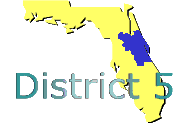| 1.0 | TRAVEL AND TRAFFIC MANAGEMENT |
| 1.2.0 | ITS shall include an En-Route Driver Information (DI) function. Driver Information provides vehicle drivers with information, while en-route, which will allow alternative routes to be chosen for their destination. Driver Information consists of two major functions which are (1) Driver Advisory and (2) In-vehicle Signing. The potential decrease in traffic may also provide benefits in highway safety, reduced air pollution, and decreased congestion. |
| 1.2.2 | Driver advisory shall be implemented in two phases with first a short term capability and later a long term capability. |
| 1.2.2.1 | The short term DI driver information capability shall include the ability to provide information to travelers within the limited area of deployment. |
| 1.2.2.1.1 | DI shall include the capability to provide travelers with accurate information concerning available travel options and their state of operational availability. |
| 1.2.2.1.2 | DI shall provide that information to travelers required for them to avoid areas of congestion. |
| 1.2.2.1.2.1 | DI shall provide that information needed for travelers to select those transportation modes that allow them to avoid congestion. |
| 1.2.2.1.3 | DI shall provide the capability for users to receive travel information in their vehicles. |
| 1.5 | TRAVELER SERVICES INFORMATION |
| 1.5.2 | TSI shall include an Information Access function that allows travelers to access the available information. |
| 1.5.2.5 | Information Access shall provide the capability for travelers to access the TSI information via any of, but not limited to, the following methods: |
| 1.5.2.5(d) | Computers in the office. |
| 1.5.2.5(g) | Personal portable devices. |
| 2.0 | PUBLIC TRANSPORTATION MANAGEMENT |
| 2.2.0 | ITS shall include an En-Route Transit Information (TI) function. En-Route Transit Information provides travelers with real-time transit and high-occupancy vehicle information allowing travel alternatives to be chosen once the traveler is en-route. It consists of three major functions which are (1) Information Distribution, (2) Information Receipt, and (3) Information Processing. This capability integrates information from different transit modes and presents it to travelers for decision making. |
| 2.2.1 | TI shall include an information distribution function that disseminates information to travelers. |
| 2.2.1.1 | Information Distribution shall include an information network capability. |
| 2.2.1.1.1 | The Information Network shall provide the capability to furnish users with real-time travel related information while they are traveling. |
| 2.2.3 | TI shall include an Information Processing function for processing that data used for generation of the En-Route Transit Information. |
| 2.2.3.1 | Information Processing shall include an information collection feature. |
| 2.2.3.1.2 | Information Collection shall acquire transit situation conditions to include, but not be limited to, the following type: |
| 2.2.3.1.2(a) | Actual road data. |
| 2.2.3.1.2(b) | Traffic data. |
| 2.2.3.2 | Information Processing shall include an information integration feature. |
| 2.2.3.2.1 | Information Integration shall collect data, store it and maintain it on-line. |
| 2.2.3.2.2 | Information Integration shall collect data from traffic and transit systems including, but not limited to, the following: |
| 3.0 | ELECTRONIC PAYMENT |
| 3.1 | ELECTRONIC PAYMENT SERVICES |
| 3.1.0 | ITS shall include an Electronic Payment capability. Electronic Payment Services allows travelers to pay for transportation services by electronic means. Four functions are provided which are (1) Electronic Toll Collection, (2) Electronic Fare Collection, (3) Electronic Parking Payment, and (4) Electronic Payment Services Integration. |
| 3.1.4 | ITS shall include an Electronic Payment Services Integration (EPSI) feature. |
| 3.1.4.1 | EPSI shall provide the capability to combine electronic payments made for use of various transportation modes into a single integrated system. |
| 7.0 | Information Management |
| 7.1 | Archived Data Function |
| 7.1.0 | ITS shall provide an Archived Data Function to control the archiving and distribution of ITS data. The Archived Data User Service provides the Historical Data Archive Repositories and controls the archiving functionality for all ITS data with five major functions: 1) the Operational Data Control function to manage operations data integrity; 2) the Data Import and Verification function to acquire historical data from the Operational Data Control function; 3) the Automatic Data Historical Archive function for permanently archiving the data; 4) the Data Warehouse Distribution function, which integrates the planning, safety, operations, and research communities into ITS and processes data products for these communities; and 5) the ITS Community Interface which provides the ITS common interface to all ITS users for data products specification and retrieval. ADUS helps achieve the ITS information goal of unambiguous interchange and reuse of data and information throughout all functional areas. |
| 7.1.3 | The Archived Data Function shall include a Data Import and Verification (DIV) function to acquire historical data from the Operational Data Control function. |
| 7.1.3.1 | DIV shall be capable of importing selected ITS Operational data from the ITS Operational Repositories. |
| 7.1.3.1.4 | DIV shall be capable of importing ITS Transit and Ridesharing data to include: |
| 7.1.3.1.4(c) | Rideshare requests. |
| 7.1.3.1.8 | DIV shall be capable of importing ITS Vehicle and Traveler data to include: |
| 7.1.3.1.8(a) | Commercial and non-commercial vehicle probe data. |
| 7.1.3.1.8(c) | Vehicle trajectories. |
| 7.1.3.1.8(d) | Route guidance data. |
| 7.1.3.1.8(e) | Parking and roadway pricing change data. |
| 7.1.3.1.8(f) | Origin/destination trip data. |
| 7.1.3.1.8(g) | Service requests |
| 7.1.3.1.8(h) | Information utilization |
| | |




